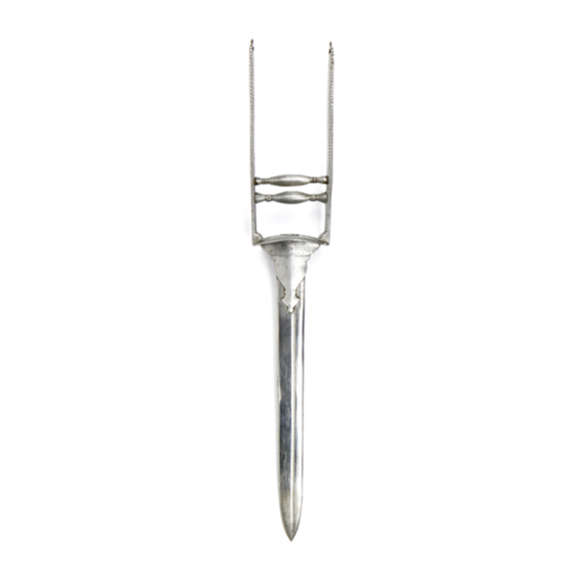An enigmatic type of axe, this one probably from tribal north India.
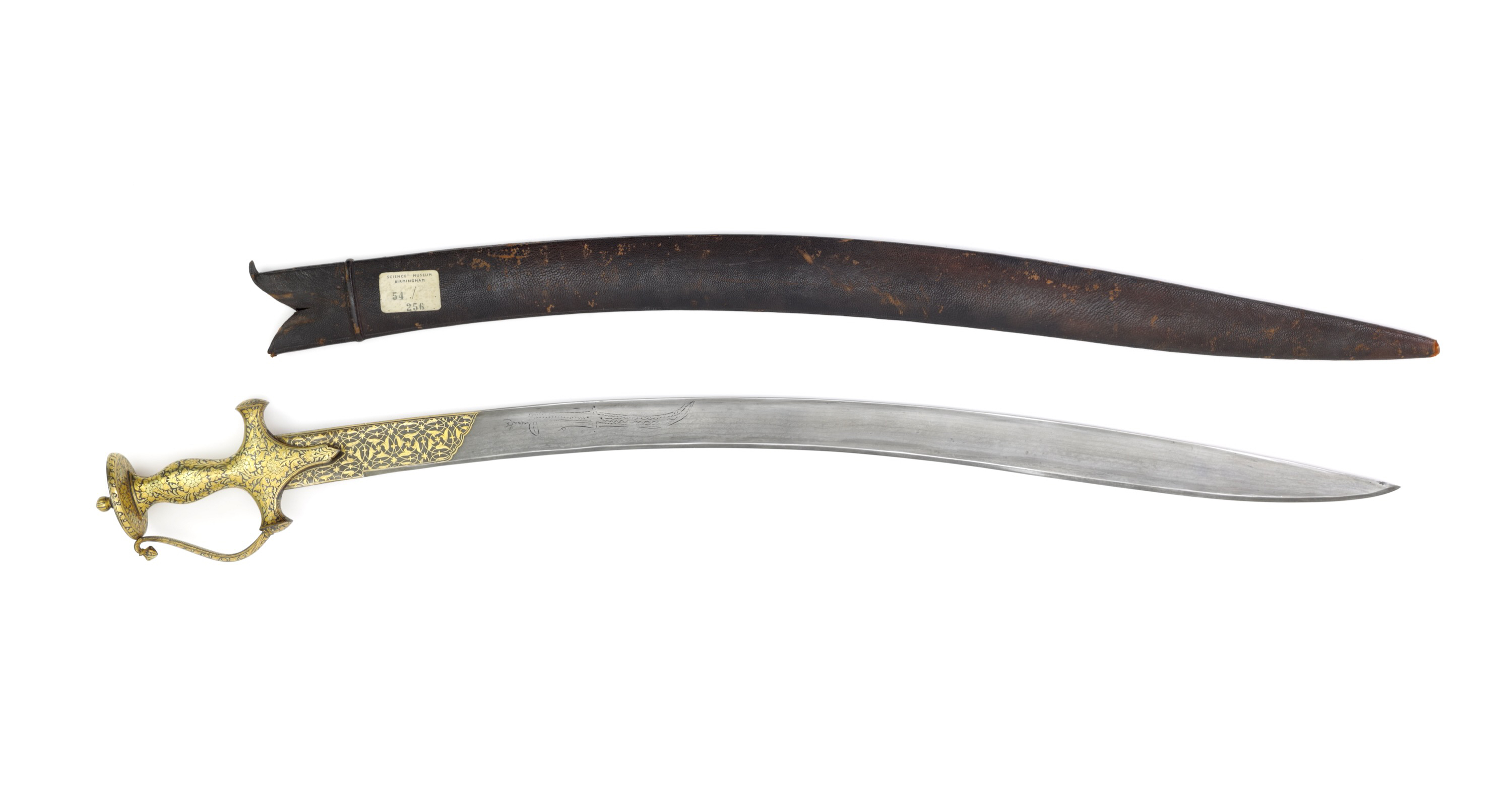
Sheathed 85 cm
Sword 82 cm
71 cm
(to center crossguard)
Base spine 8 mm
Middle spine 7 mm
5 cm from tip spine 3.5 mm
Base 35 mm
Middle 33 mm
Widest 36 mm
5 cm from tip 21 mm
765 grams
15.8 cm
(from center crossguard)
Steel, iron, wood, leather, pitch, gold, silver
Punjab, probably Lahore
First half of the 19th century
Exhibited at the Science Museum, Birmingham
Inv. no. 54-256
Description
One of the rarest and most sought-after Indian sword types, the sosun pattah. Most appear to originate from Punjab, and Lahore in particular, which was the seat of the Sikh Empire between 1799–1849. The Sikh presence attracted many sword makers from far and wide to the city, producing arms for the Sikh armies.
Its name literally means "lily leaf", named so after its graceful forward curving blade with slight widening before the tip. The blade has a T-shaped cross-section for added rigidity.
The base of the blade is overlaid with a series of swastikas in the typical Persian fashion that was popular at the time.1 The left side is inlaid with a multitude of silver dots and stars, appearing in rows.
The spine is overlaid in gold with a series of spheres and vertical lines.

The design somewhat reminds of the stacked turban ornaments seen worn by Sikh Nihang warriors that can include chakram, daggers, swords and sometimes spears, but the fact that the circles have archers insides may suggest they are not chakram but highly stylized flowers instead.
Notes
1. See a hilt decorated with this pattern in the Boston Museum of Fine Arts, 17.2691.
Twist-core blade
The blade on this example is unusually forged, with many narrow rows of layered bars that have been twisted, ground down, and forged together. A technique known as twist-core. I count at least 9 rows in the blade, with the T-shaped spine also being twisted effectively making a 10th row. The consistency and flawless forging of all the layers is a tour de force of bladesmithing.
It is very unusual to see twist-core on an Indian blade, even though the technique was well known in the area and extensively used for gun barrels. On blades, the closest regions that come to mind where the technique appears are Tibet and China in the east, the Philippines in the southeast, and the Ottoman empire to the west.
In fact, one would be tempted to think it may be an Ottoman yatağan blade, which is very similarly shaped. The forging does remind strongly of the "Turkish Ribbon" twist core, sometimes seen on fine Ottoman blades. But, the blade also has that typical Indian ricasso that hints towards either local manufacture or perhaps it being specifically ordered.
In any case, it got its lavish gold decor in Punjab where the artist drew a "shadow" of the hilt's langet in gold.

Hilt
The hilt is of typical form for a sosun pattah, it is in a local Punjabi style with a vase-shaped grip section, a D-guard ending in a flower bud, a dished pommel with a smaller dome inside, and short, slightly forward inclined quillons.
The hilt's decoration and finish are in one word; stunning. A word you won't find on my website a lot. Done in the finest overlay that was done in the period, depicting floral motifs in two tones of gold over a blackened background. The work is so precise that at first glance it may look like a fine true inlay.
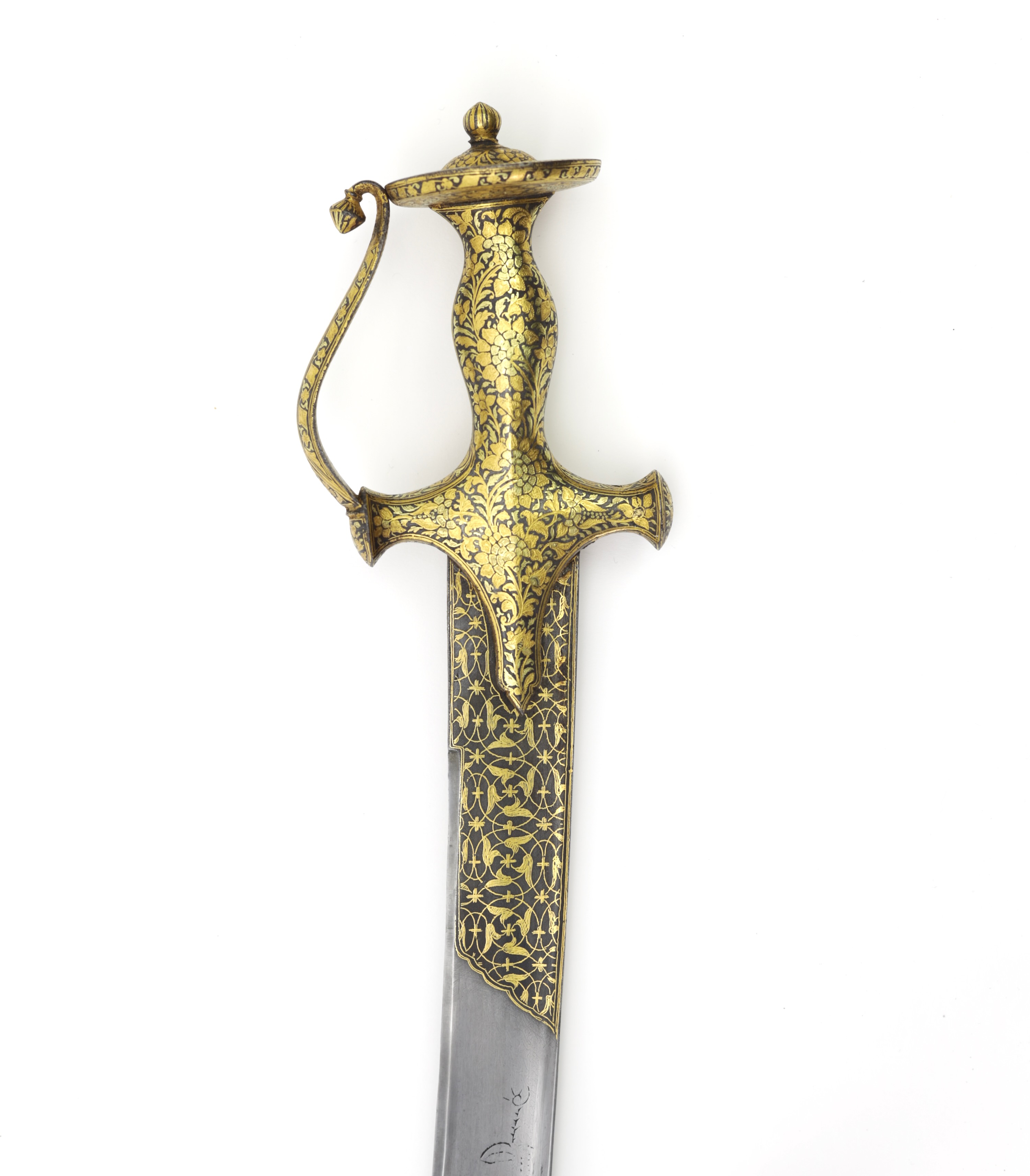
Markings on blade
Blade is engraved on both sides, with a cartouche on one side and a depiction of Zulfiqar, the legendary sword of Ali, on the other.

Mark on left side
Zulfiqar on right side
Scabbard
It comes with its original wooden scabbard covered with bookbinder's grade, pebble-grained leather. Scabbard is structurally sound and a perfect fit.
It bears an old inventory tag:
SCIENCE MUSEUM
BIRMINGHAM
54 /
256
This refers to the Museum of Science and Industry which existed from 1951 until 1997 when it was defunded.
Condition
In near-mint condition. Gold and blackening on hilt almost 100% intact. Blade in near-perfect condition, some fading to the shallow engravings. Some cosmetic damage to scabbard. See photos.
Comparable examples
Sosun pattah are relatively rare in museum collections. The British Royal Collection, for example, has no sword of this type in its extensive holdings of Indian arms, many of which were presented to King Edward, when Prince of Wales, during his Indian tour of 1875-1876. The type also appears absent in the vast holdings of the Metropolitan Museum arms and armor department.
The Victoria & Albert museum owns two.1 Of those, accession number IS.228&A-1964 has a hilt and style of workmanship that is comparable to ours, but the work on ours is more dense and in two tones instead of one tone of gold as seen here.
According to the entry, its fine, high-contrast wootz blade is believed to be Turkish but again I see a typical North Indian forte. I believe it more likely to be made by a Persian craftsman working in Lahore, sometimes working with fine imported wootz from Isfahan or Khorasan.
Notes
1. The other is accession number 3531&A(IS).
Conclusion
A remarkable sosun pattah with fine, unusual twist-core blade and gold overlaid hilt of some of the finest quality made at the time.

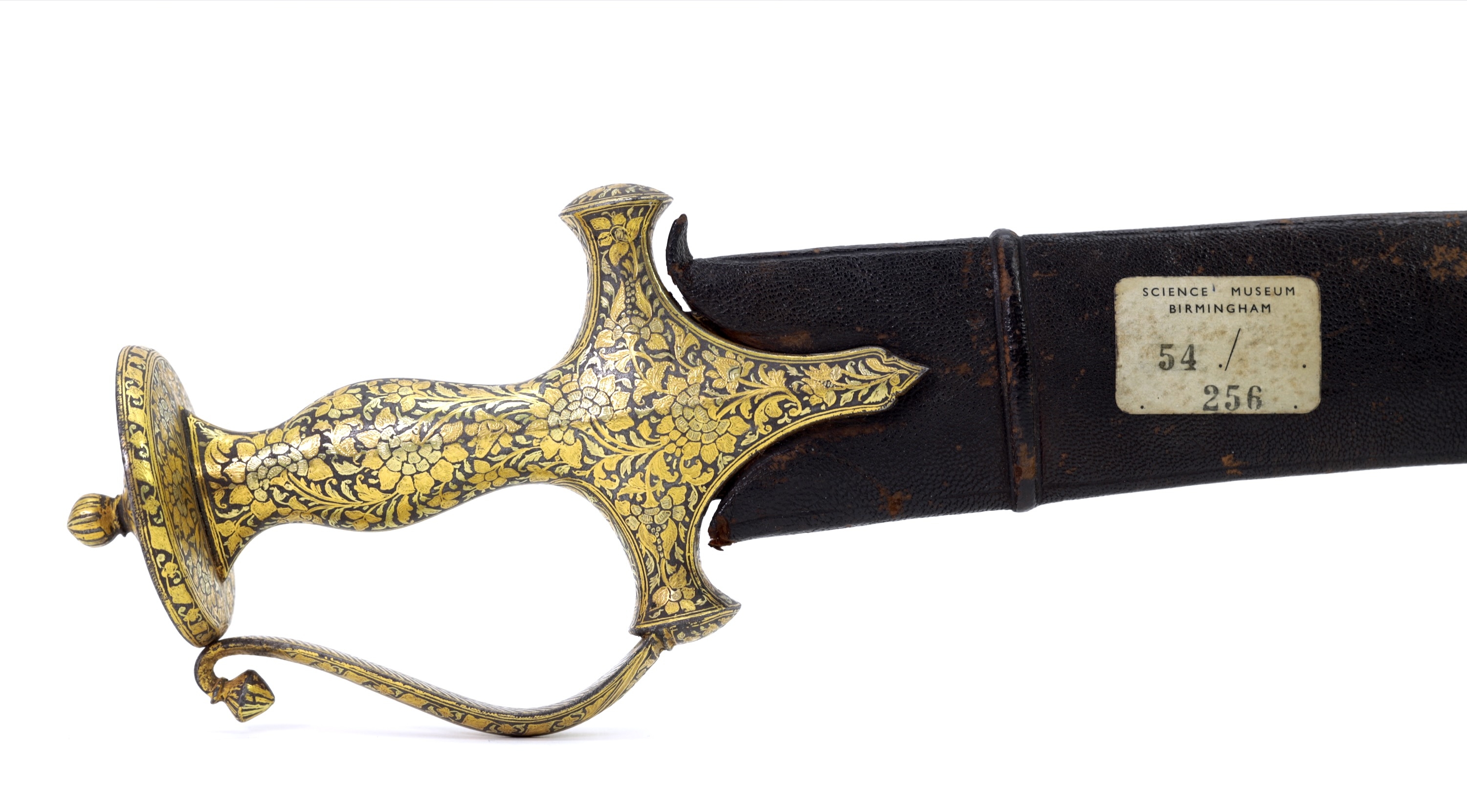
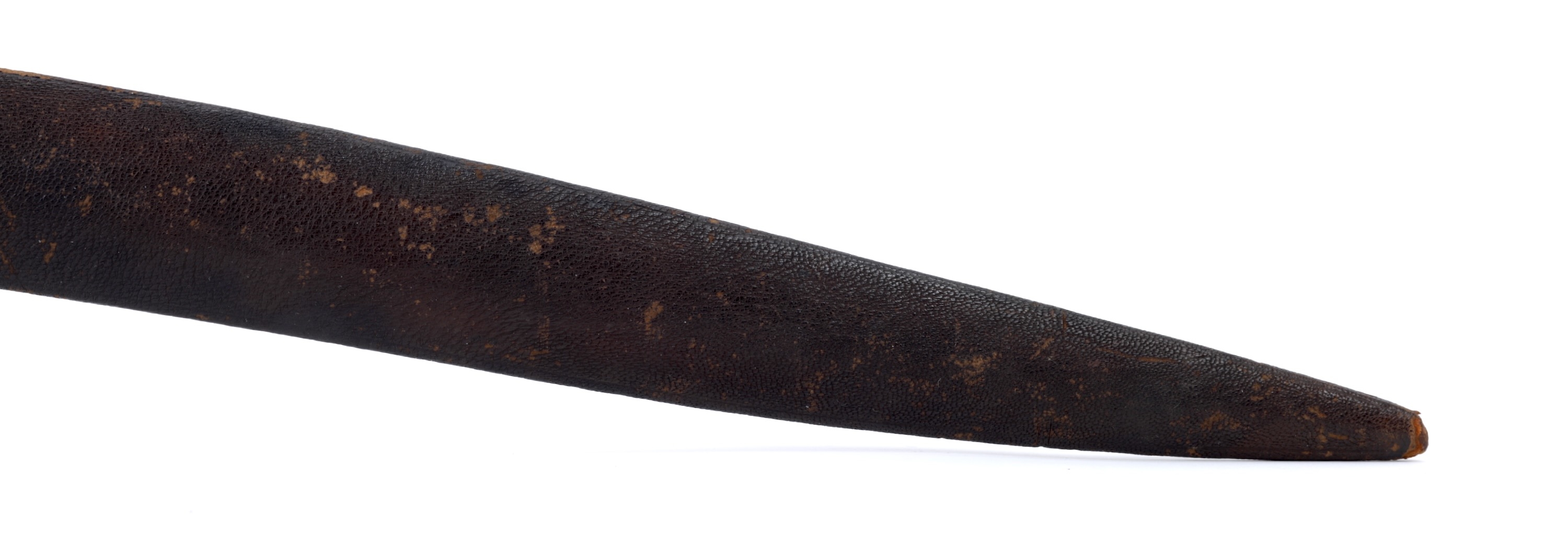

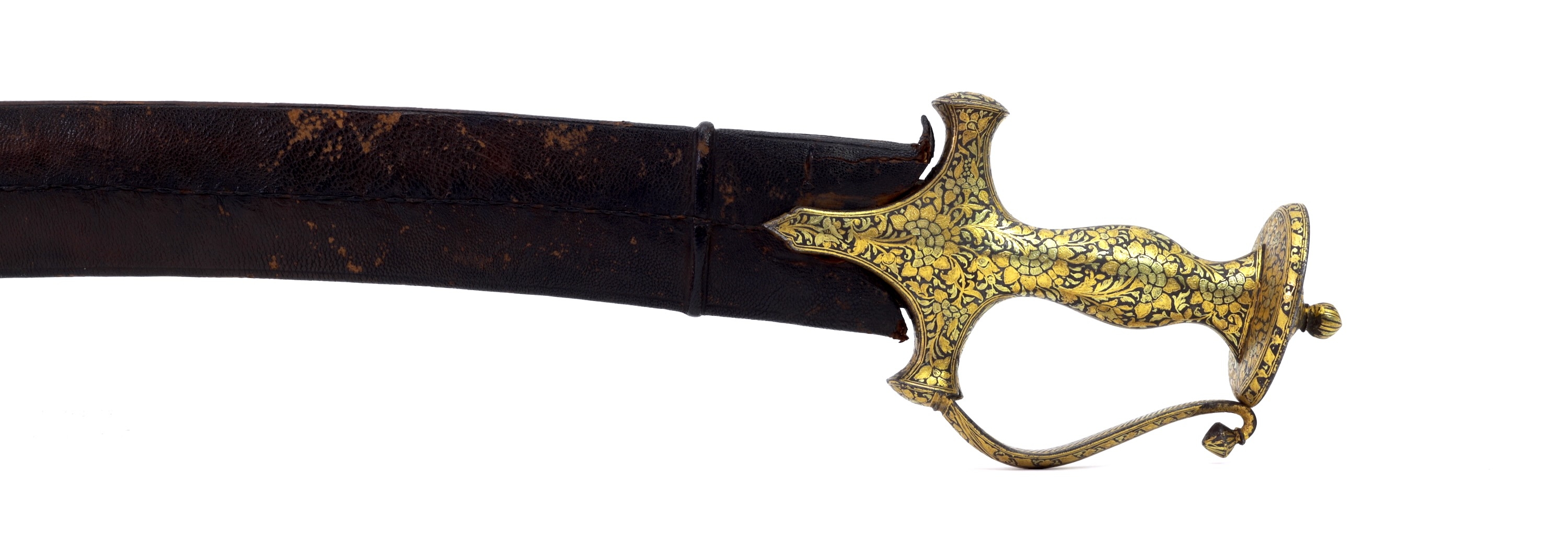




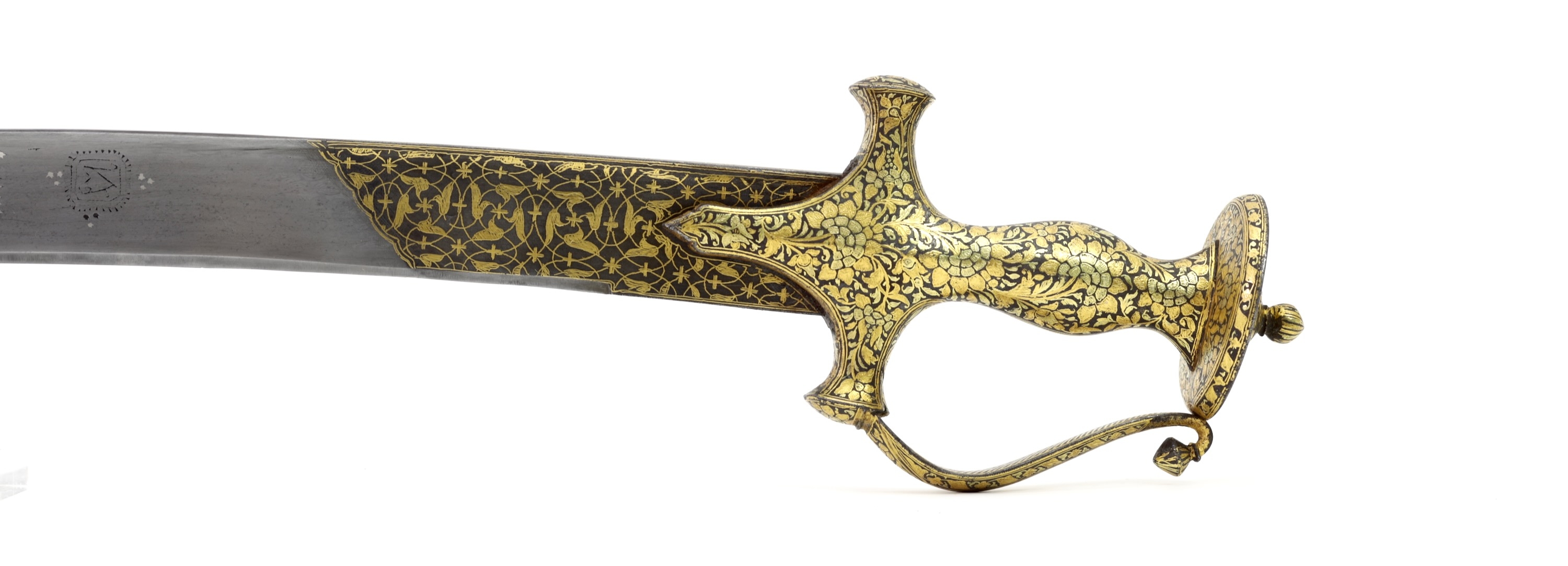


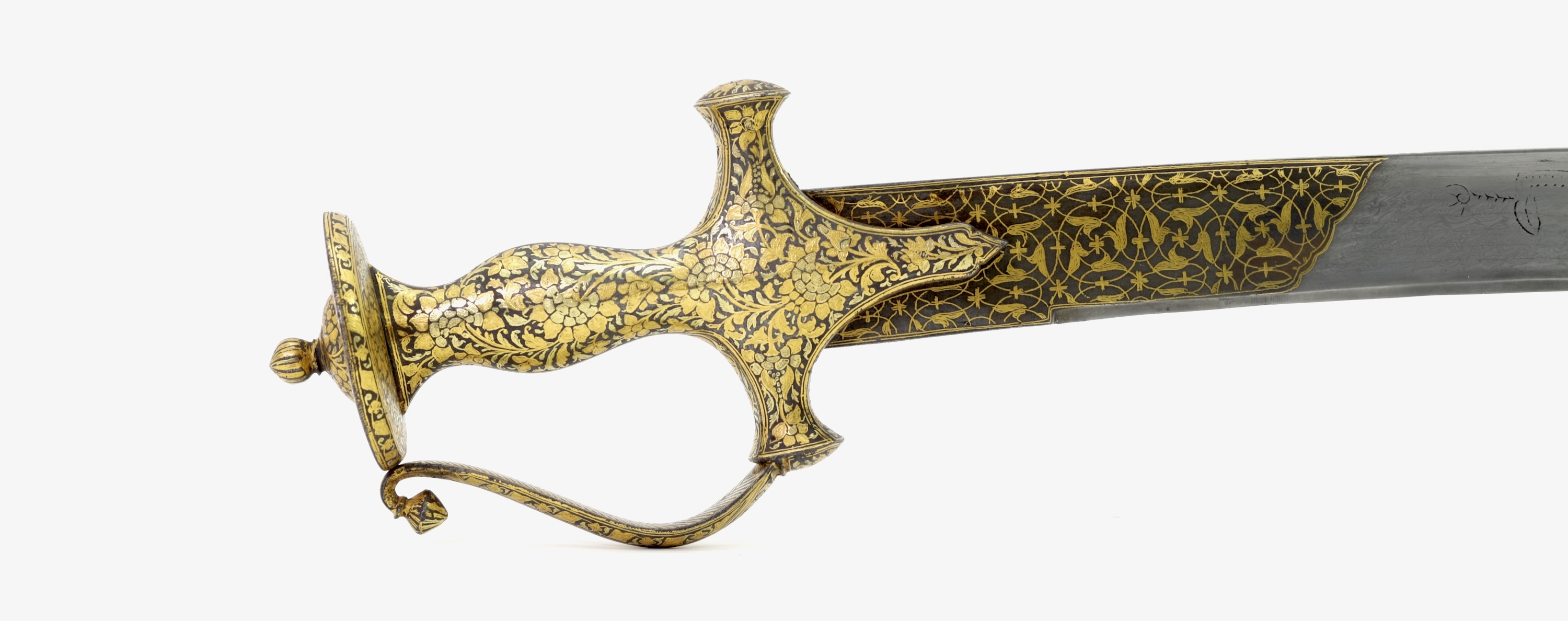











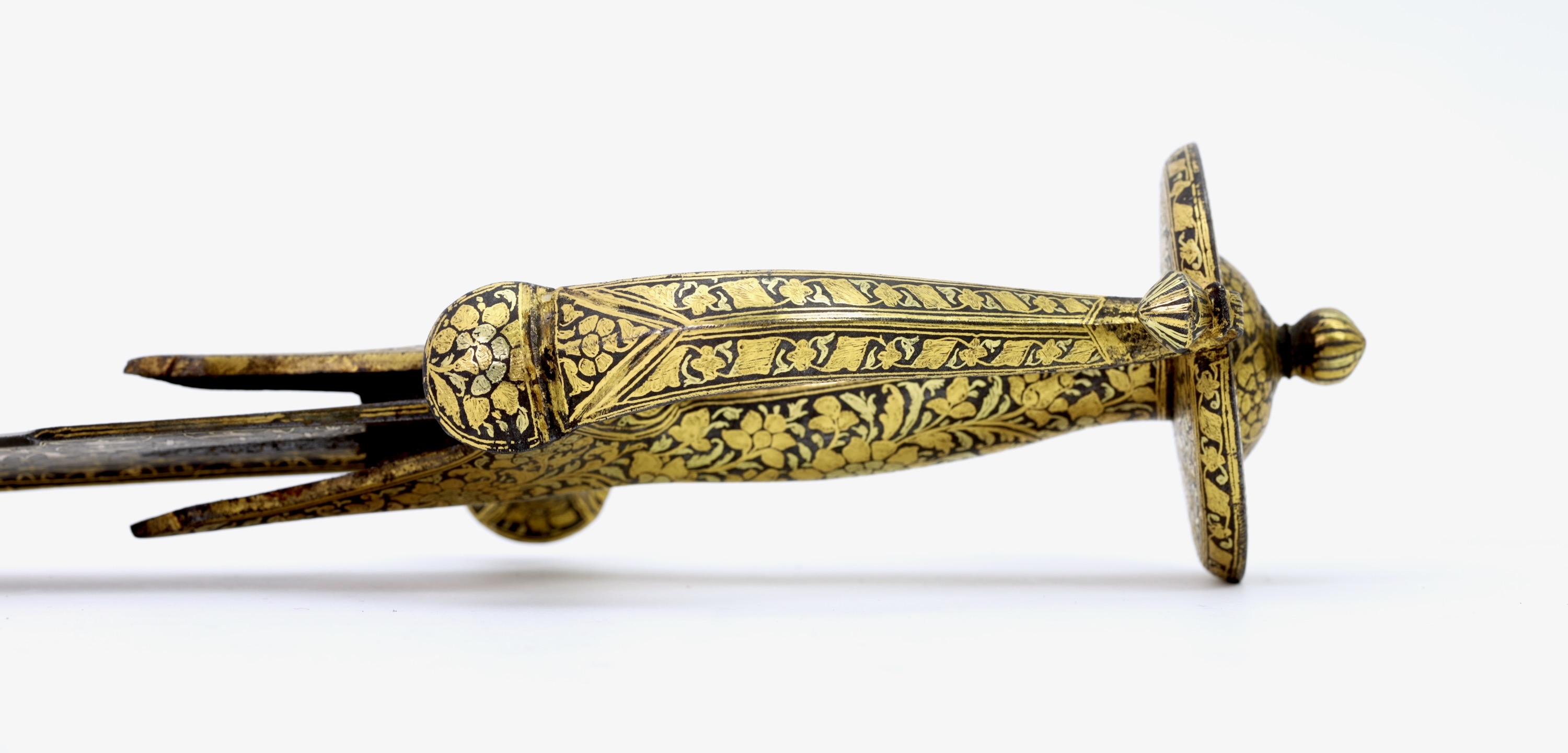

Mentioning the son of a Maharajah and a year corresponding to 1887 A.D.
This peculiar sword was used by the Garo people of Assam for fighting, clearing the jungle, and animal…
These mysterious weapons were already obsolete when the first ethnographers encountered them.
An interesting South Indian style katar with an imported European blade.







